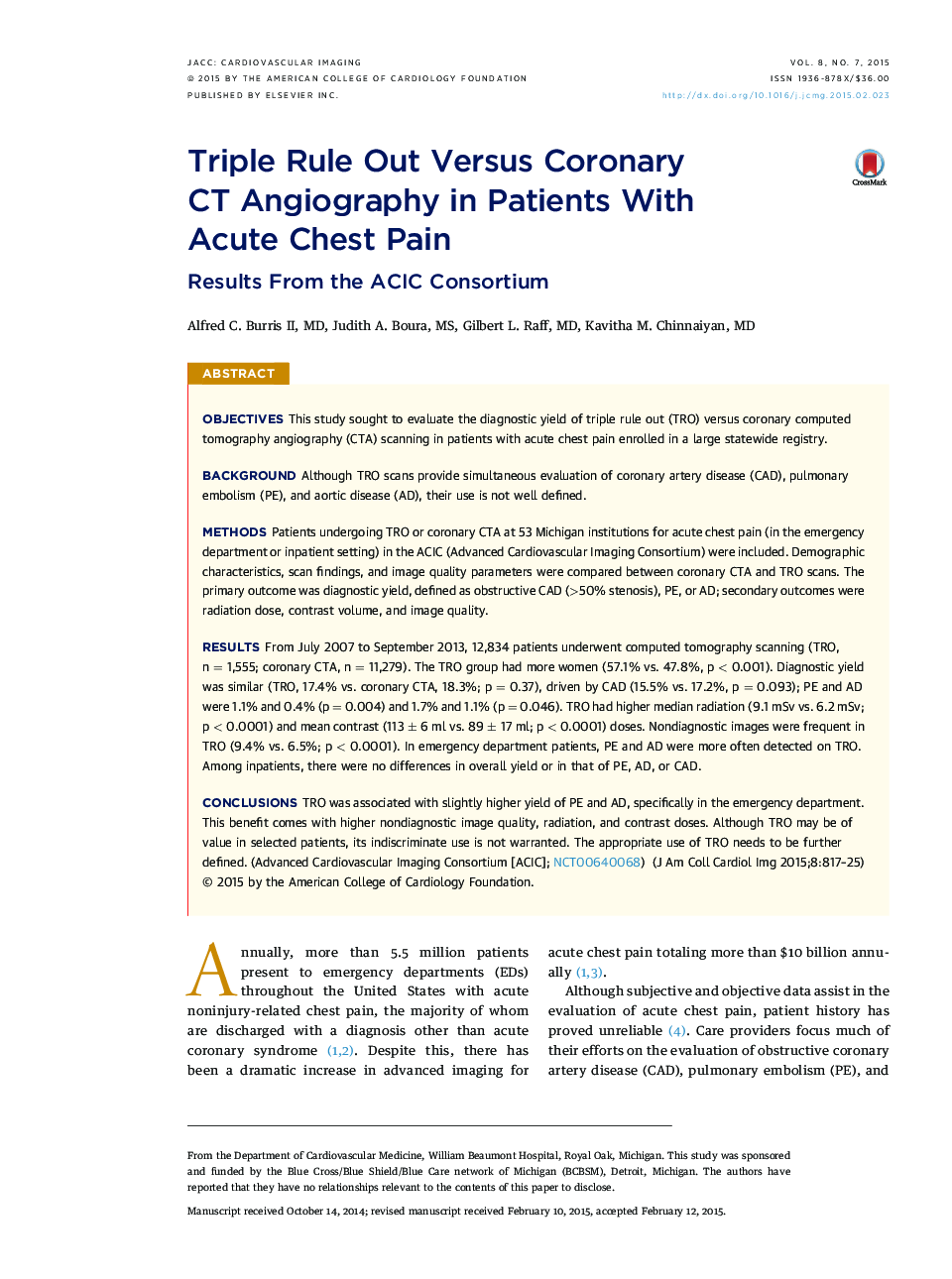| کد مقاله | کد نشریه | سال انتشار | مقاله انگلیسی | نسخه تمام متن |
|---|---|---|---|---|
| 5980243 | 1176911 | 2015 | 9 صفحه PDF | دانلود رایگان |

ObjectivesThis study sought to evaluate the diagnostic yield of triple rule out (TRO) versus coronary computed tomography angiography (CTA) scanning in patients with acute chest pain enrolled in a large statewide registry.BackgroundAlthough TRO scans provide simultaneous evaluation of coronary artery disease (CAD), pulmonary embolism (PE), and aortic disease (AD), their use is not well defined.MethodsPatients undergoing TRO or coronary CTA at 53 Michigan institutions for acute chest pain (in the emergency department or inpatient setting) in the ACIC (Advanced Cardiovascular Imaging Consortium) were included. Demographic characteristics, scan findings, and image quality parameters were compared between coronary CTA and TRO scans. The primary outcome was diagnostic yield, defined as obstructive CAD (>50% stenosis), PE, or AD; secondary outcomes were radiation dose, contrast volume, and image quality.ResultsFrom July 2007 to September 2013, 12,834 patients underwent computed tomography scanning (TRO, n = 1,555; coronary CTA, n = 11,279). The TRO group had more women (57.1% vs. 47.8%, p < 0.001). Diagnostic yield was similar (TRO, 17.4% vs. coronary CTA, 18.3%; p = 0.37), driven by CAD (15.5% vs. 17.2%, p = 0.093); PE and AD were 1.1% and 0.4% (p = 0.004) and 1.7% and 1.1% (p = 0.046). TRO had higher median radiation (9.1 mSv vs. 6.2 mSv; p < 0.0001) and mean contrast (113 ± 6 ml vs. 89 ± 17 ml; p < 0.0001) doses. Nondiagnostic images were frequent in TRO (9.4% vs. 6.5%; p < 0.0001). In emergency department patients, PE and AD were more often detected on TRO. Among inpatients, there were no differences in overall yield or in that of PE, AD, or CAD.ConclusionsTRO was associated with slightly higher yield of PE and AD, specifically in the emergency department. This benefit comes with higher nondiagnostic image quality, radiation, and contrast doses. Although TRO may be of value in selected patients, its indiscriminate use is not warranted. The appropriate use of TRO needs to be further defined. (Advanced Cardiovascular Imaging Consortium [ACIC]; NCT00640068).
Journal: JACC: Cardiovascular Imaging - Volume 8, Issue 7, July 2015, Pages 817-825